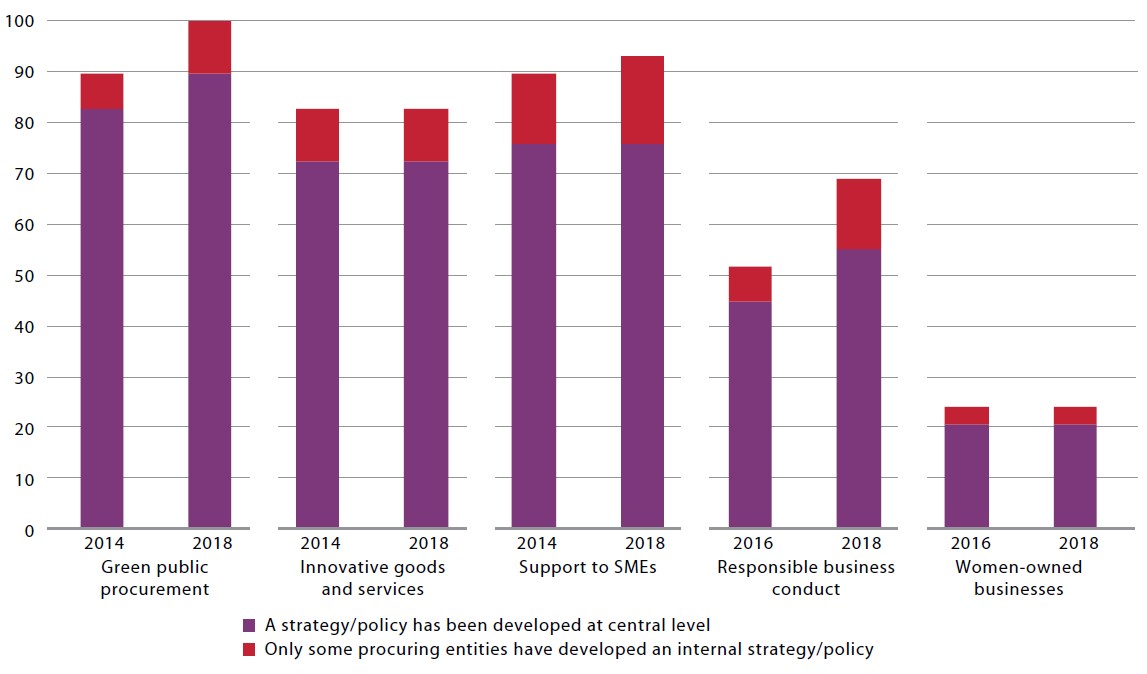In the Addis Ababa Action Agenda, Governments:
- Commit to strengthen national control mechanisms, such as supreme audit institutions, along with other independent oversight institutions, as appropriate
- Commit to establish transparent public procurement frameworks as a strategic tool to reinforce sustainable development
- Commit to increase transparency and equal participation in the budgeting process
Latest developments
Governments are increasingly employing public procurement to achieve policy objectives that are aligned with the 2030 Agenda, such as promoting innovation, sustainability, social inclusiveness and SMEs. Increasing fiscal pressures have further highlighted the potential gains from public procurement reforms. As of 2018, all OECD countries reported to have developed procurement policies towards broader policy objectives, such as a green investment, promotion of SMEs, and innovation. Between 2016 and 2018, there has been an upward trend in the development of policies addressing green procurement and, particularly, responsible business conduct.
Existence of a strategy/policy to pursue secondary policy objectives in public procurement, 2014 and 2018
(Percentage of countries surveyed)

Source: OECD.
Note: Based on data from 29 countries that answered both the 2018 and one of the 2016/2014 surveys on public procurement.
Read more on expenditure and strategic procurement in public budgets here.
Gender responsive budgeting (GRB) enables Governments to plan and budget for efforts to support achievement of gender equality objectives. Although progress has been made in implementing GRB globally, significant gaps remain. SDG Indicator 5.c.1, the international standard for GRB, assesses government efforts to put in place gender-focused policies, gender-responsive public finance management systems and budget transparency. An analysis of 69 countries and areas reporting on Indicator 5.c.1 in 2018 found that 19 per cent fully met those criteria and 59 per cent approached the requirements. The data also revealed a gap in policy implementation. Among the same set of countries, 90 per cent had policies and programmes in place to address gender gaps, but only 43 per cent reported adequate resource allocations to implement them.
Read more on incorporating gender equality here, and also refer to cross-cutting issues on promoting peaceful and inclusive societies and gender equality.